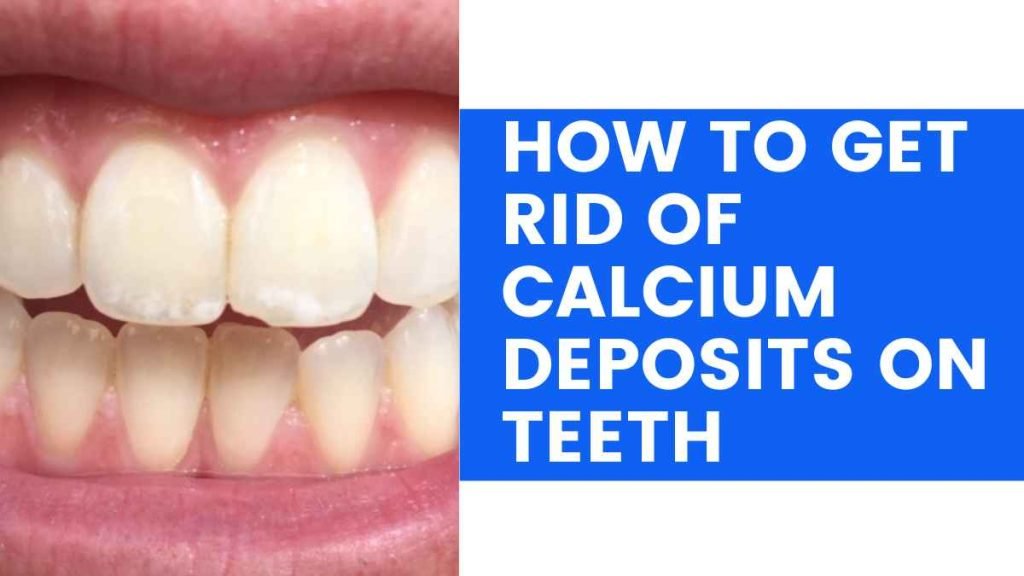How to Get Rid of Calcium Deposits on Teeth! Having a bright, healthy smile can significantly boost your confidence. However, sometimes, unsightly calcium deposits on teeth can mar that beautiful smile. Don’t worry; you’re not alone in dealing with this issue. In this comprehensive guide, we will explore How to Get Rid of Calcium Deposits on Teeth. Here we’ll delve into the causes, step-by-step solutions, signs and symptoms, preventive measures, common mistakes to avoid, useful tips and tricks, intriguing facts, and a thoughtful conclusion. So, let’s get your smile back to its gleaming best!
Table of Contents
What Causes Calcium Deposits?
Calcium deposits on teeth, also known as tartar or calculus, are caused by the accumulation of mineralized plaque. When plaque, a sticky film of bacteria, lingers on your teeth, it eventually hardens into tartar due to the minerals in your saliva. Poor oral hygiene, excessive consumption of sugary foods, and irregular dental check-ups can exacerbate this condition.
How to Get Rid of Calcium Deposits on Teeth: A Step-by-Step Guide
Here you can check the step-by-step guide about How to Get Rid of Calcium Deposits on Teeth:
Total Time: 10 minutes
Regular Brushing and Flossing
The foundation of good oral health is regular brushing and flossing. Use a fluoride toothpaste and a soft-bristled toothbrush. Don’t forget to floss daily; it reaches areas your brush can’t.
Invest in an Electric Toothbrush
Electric toothbrushes are efficient in removing plaque. Their oscillating bristles reach deep into crevices, preventing calcium deposits from forming.
Mouthwash with Fluoride
Rinsing with fluoride mouthwash not only freshens your breath but also strengthens tooth enamel, making it harder for calcium deposits to stick.
Professional Dental Cleaning
Visit your dentist biannually for professional cleanings. Dental hygienists use special tools to remove tartar, ensuring your teeth are spotless.
Natural Remedies
Consider natural remedies like oil pulling with coconut oil or rinsing with a baking soda solution. These methods, rooted in ancient practices, help remove surface stains and tartar.
Signs and Symptoms of Calcium Deposits
- Visible Yellow or Brown Spots: Tartar often appears as discolored spots on teeth.
- Bad Breath: The accumulation of bacteria leads to persistent bad breath.
- Gum Inflammation: Tartar buildup can irritate gums, causing inflammation and tenderness.
- Tooth Sensitivity: Deposits near the gumline can lead to sensitivity, especially with hot or cold foods.

Preventing Calcium Buildup
Prevention is the key to maintaining a bright smile.
Balanced Diet
Avoid excessive sugary and acidic foods. Opt for a balanced diet rich in calcium and vitamin D to strengthen teeth.
Drink Water
Water helps wash away food particles and keeps your mouth hydrated, discouraging tartar formation.
Dental Check-ups
Regular dental check-ups are crucial. Dentists can identify and remove early signs of tartar before it hardens.
Common Mistakes to Avoid
Avoid these pitfalls to keep your smile radiant.
Ignoring Oral Hygiene: Skipping regular brushing and flossing invites tartar buildup.
Overusing Whitening Products: Excessive use of whitening products can erode enamel, making it easier for calcium deposits to form.
Delaying Dental Visits: Ignoring dental appointments allows tartar to accumulate unchecked, leading to dental problems.
Tips and Tricks
Use Tartar-Control Toothpaste: Tartar-control toothpaste contains specific ingredients to hinder tartar formation.
Straw Technique: When drinking beverages high in sugar or acid, use a straw. This minimizes contact with teeth.
Chew Sugarless Gum: Chewing sugarless gum stimulates saliva production, which naturally cleanses teeth.
Facts About Calcium Deposits
- Everyone is Prone: Regardless of good oral hygiene, everyone is susceptible to tartar buildup.
- Tartar Harbors Bacteria: Tartar provides a breeding ground for harmful bacteria, leading to various dental issues.
- It Can Only Be Removed Professionally: Once tartar hardens, it can’t be removed by regular brushing; a dentist’s intervention is necessary.
Conclusion
In conclusion of How to Get Rid of Calcium Deposits on Teeth, a radiant smile is within your reach. By following proper oral hygiene practices, visiting your dentist regularly, and being mindful of your diet, you can prevent and eliminate calcium deposits on your teeth. Remember, your smile is your signature, so keep it bright and beautiful! Here you can checkout that How to Relieve Pain After a Teeth Cleaning.
FAQs About How to Get Rid of Calcium Deposits on Teeth
Can calcium deposits on teeth be removed at home?
While regular oral hygiene helps prevent tartar buildup, once it hardens, professional dental cleaning is necessary to remove it effectively.
Are calcium deposits painful?
Initially, they might not cause pain. However, as they progress, they can lead to gum inflammation and tooth sensitivity.
Can tartar cause cavities?
Yes, tartar accumulation near the gumline can create pockets where bacteria thrive, increasing the risk of cavities and gum disease.
Can whitening toothpaste remove calcium deposits?
Whitening toothpaste can help remove surface stains but isn’t effective against hardened tartar. Professional cleaning is required.
How often should I visit the dentist for check-ups?
It’s recommended to visit the dentist every six months for regular check-ups and cleanings to maintain optimal oral health.
Can calcium deposits lead to tooth loss?
Prolonged tartar buildup can lead to advanced gum disease, potentially resulting in tooth loss if left untreated.
Is tartar the same as plaque?
No, plaque is a soft, sticky film of bacteria that hardens into tartar when not removed through proper oral hygiene practices.


